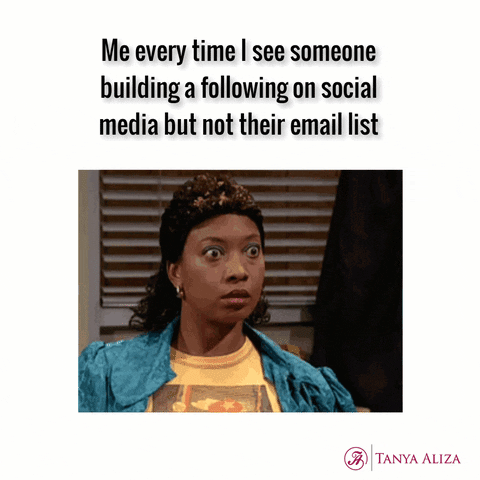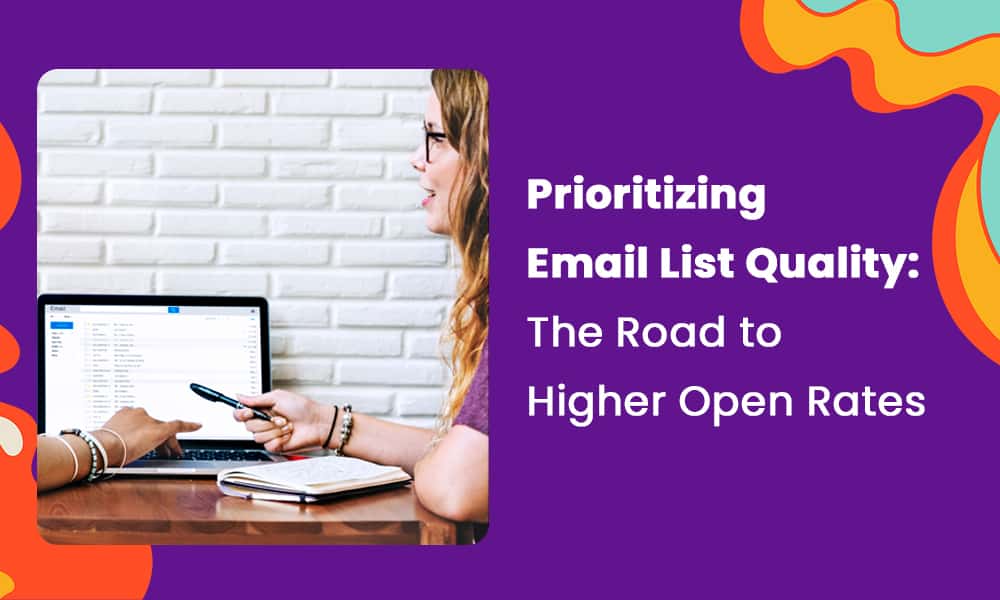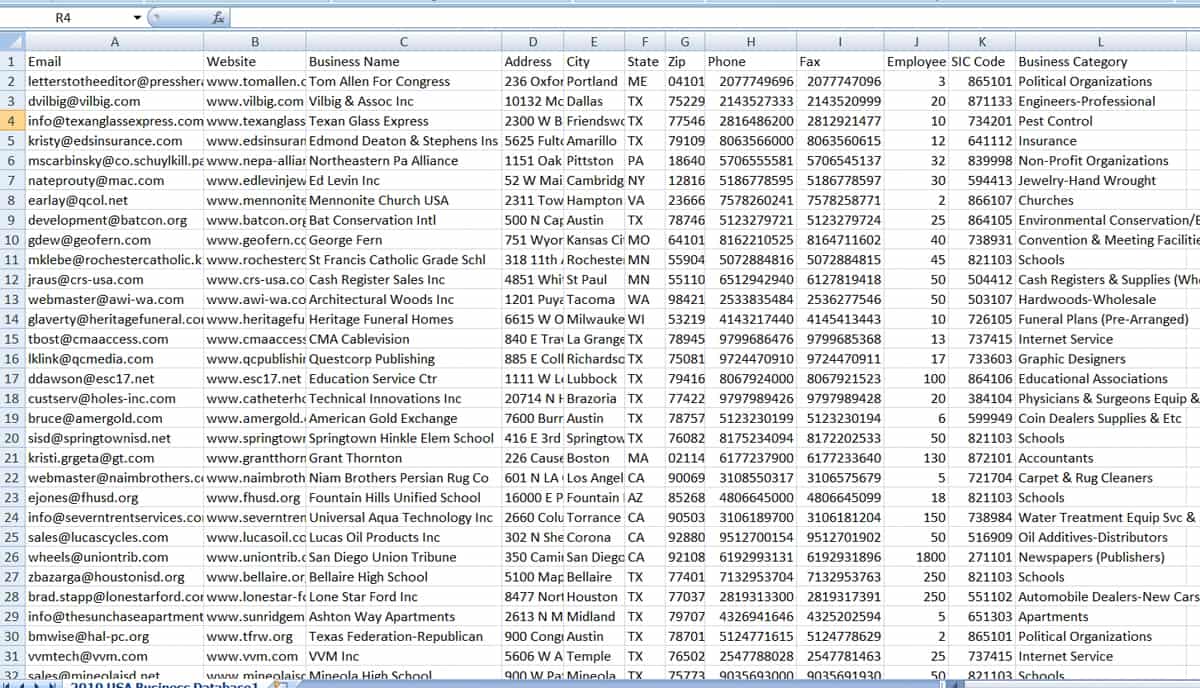What criteria do you use to determine your email list quality? An email list with 1,000 contacts doesn’t mean much if each contact is a dead or disengaged email address. Quality matters.
This blog post will help you understand email list quality and tell you which markers matter most when you’re growing your email list. We’ll also talk about how to clean up your email list so it shines, and share some tips for finding quality email contacts.
Table of Contents
Indicators of Poor Email List Quality
Knowing whether your email list prioritizes quality or quantity is not as simple as counting your subscribers. Instead, check for these indicators.
Many of your messages bounce
We just wrote an informative post about email bouncing as part of our email deliverability series you should read in the crusade to improve your email engagement.
A message bounces due to server issues, aka a soft bounce, or permanent barriers, aka a hard bounce.
If your bounce rate exceeds 5%, you’ve prioritized quantity over quality. You didn’t necessarily care who was on your email list as long as they joined. As a result, you’ve fostered a list full of disengaged, uninterested, and possibly nonexistent email addresses.
Your unsubscribe rate keeps climbing
As much as you don’t have a problem filling up an email list, you struggle with keeping subscribers long-term. For every new subscriber you get, five or 10 unsubscribe. You can’t remember a day that didn’t end with a flood of new unsubscribe notices.
This is a clear indicator you’ve collected a list of random contacts who likely don’t care about the content you’re sending. You don’t know these contacts, so the content isn’t personalized for them. It’s only a matter of time before they get fed up and bail.
Your open and click-through rates are poor
The metrics of your latest email marketing campaigns will be very telling. You should have an ample open and click-through rate if you care more about quality than quantity, as you take the time to engage with your audience, sending tailored communications they want to read.
A low open rate means sending emails to inactive, unfamiliar contacts. The subset of your audience that could be engaged might not bother opening your messages due to poor sending frequency or lackluster subject lines.
A low click-through rate indicates weak or nonexistent CTAs, non-personalized content, and uninspiring offers.
Why You Should Not Buy Email Lists
You have many ways of building an email list, including putting the time and work in to grow your own or buying someone else’s. The latter is admittedly more attractive.
You don’t have to funnel the time or money into advertising because here’s a full-fledged list right in front of you. You just have to use your marketing chops to keep the audience on the line.
It sounds simple, but rarely does it work out the way marketers hope. Here are some very convincing reasons against buying an email list.
You have no idea what you’ll get
In the eponymous film, Forrest Gump uttered the classic line, “Life is like a box of chocolates. You never know what you’re going to get.” Buying email lists is like a box of chocolates, too, as you definitely don’t know what you’ll get. The seller might have promised an engaged, targeted email list, but we doubt you’ll get it.
You see, quality email marketing services don’t sell email lists. High-quality contacts don’t end up on lists for sale. All this is to say your contact list will scrape the bottom of the barrel, leaving you crestfallen and disenfranchised.
Read also: Email Feedback Loops: How They Work, How to Set Them Up, and Some Tips
You don’t know your audience (and they don’t know you)
You might assume you’re purchasing an engaged audience, but that’s rarely true. Instead, you’ve bought a list of strangers. They don’t know you, and you don’t know them. They might never have heard of your brand before, or perhaps some have a passing knowledge.
Depending on the size of the list you bought, some subscribers might have an affinity for your brand, but most will not. You have to treat these subscribers as cold leads, beginning the nurturing and engagement process all over again.
Read also: Unlocking the Secrets of Email Sender Reputation
Your ISP can punish you
Here’s another excellent reason to eschew purchasing random email lists – you could get in hot water with your ISP. If you missed the rest of our email deliverability series (and you should really go back and give it a read if you did), an ISP stands for an internet service provider.
ISPs can block emails within their network to protect their customers. You must have a good sender reputation for your ISP to continue sending your emails. Purchasing emails is one way of many to tank your sender reputation. (Others include using spam words, mass emailing, and failing to send targeted relevant content.)
Once an ISP blocks you, you could wait weeks or months to get unblocked, depending on the severity of your infraction. That’s a long time to go without furthering your email marketing campaign.
You could get reported for spam
Purchasing a list of hundreds to thousands of disengaged users raises the risk of them reporting your messages as spam. A spam report here and there won’t hurt your sender reputation, but enough spam complaints over a long period will tank your email deliverability.
You won’t make as many sales as you think
The prospect of buying emails is a justifiable business decision to some because you assume you’ll make back what you spent through all those sales. However, you must consider that your new email list is full of strangers.
Why should they purchase your products or services? They don’t know anything about your brand yet. That’s compounded by the fact that you don’t know what to sell them because you’re unaware of their pain points.
Randomly recommending products will further harm your already shaky standing with your audience. In your efforts to get to know them all over again, you’d have to wait to make the sale.
Read also: Avoiding the Spam Folder: An Intro to Email Deliverability
You’ll tarnish your reputation
Setting aside your sender reputation for a moment, you’ll also harm your overall reputation by purchasing contacts. You’ll become known as that small business that bought its contacts, which could affect the quality of vendors and partners who want to work with you.
People forget eventually, most of the time, but it’s not worth pulling your reputation underwater just for extraneous contacts that won’t help your email metrics anyway.
You could break consent rules
We saved what is the most compelling reason to avoid buying contacts for last: GDPR regulations. The General Data Protection Regulation, or GDPR, became effective in 2018 and protects human rights and privacy.
Your company can be based in America and must still comply with GDPR rules and standards if your customers are outside the US.
GDPR rules apply beyond email marketing, including social media and your website, so you should comply with all. You must have consent to email your audience under the GDPR, and you don’t have that when you buy your email list.
None of those contacts consented to join your list; they were transferred to your list when you bought it. Sending even a single email is risky and could result in fines and other stiff penalties.
Read also: Bounce Rates and Email Deliverability – A Simple Guide
12 Expert Tips to Improve Your Email List Quality

You can have your cake and eat it too, growing your email list size with reputable contacts. It only takes incorporating these measures into your email marketing campaigns.
1. Customize your landing pages well
A landing page is often the first destination on your website a lead sees, so it must make a good impression. Rewrite the copy, taking on a less salesy approach and writing in a benefits-focused manner.
Break up long paragraphs, as it’s difficult to read them, let alone skim them. Add bullet points and lists, and use subheads if needed.
Incorporate media, especially high-res photos of your product and video demonstrations. Use CTAs, either links or buttons or perhaps a mix.
A/B test your landing page so it resonates with your target audience. Ensure each product or service you sell has a unique landing page, and consider several landing pages for one product depending on the audience segment you’re targeting.
2. Build customer avatars
Speaking of targeting an audience, before you can do that, you must have a thorough knowledge of who comprises your audience. Now is the ideal time to review customer data and issue feedback surveys to gauge your audience.
Once you have demographic, psychographic, and geographic data, use it to create customer avatars based on the most recurring traits of your target market. Consider these avatars or personas as you begin your email marketing campaign and strive to build your email list.
3. Use audience segmentation
Protecting your sender reputation means avoiding mass-emailing large groups, which is done by segmenting your email list. Segment based on the above criteria, forming small, specific groups.
Once you get to the core of what those groups need, you shouldn’t struggle to position the right products and services in front of them. Better yet, your audience will be receptive to your offer, which would be impossible if you bought your list.
Read also: How To Avoid Spam Filters For Better Email Deliverability
4. Get permission
This is a big one, as email consent is a must under GDPR regulations. Even if your small business operates exclusively in the US, you should still get into the habit of requesting permission before sending emails.
It’s a good practice to prove to your audience that you value and respect their privacy. Plus, if a regulation like GDPR comes to America, you’ll be more than ready.
5. A/B test your emails
You shouldn’t only split-test your landing pages but also your email campaigns. Sometimes, it takes only a small element to majorly impact your email open rate and engagement.
Test all email elements, from the subject line to the greeting, the CTA color and shape, copy, and send times.
Read also: Email List Cleaning – It’s Time To Give Yours A Good Scrub
6. Improve the quality of your lead magnets
A more engaged, receptive, quality email list begins with improving your lead magnets. If you just give away anything, you can’t be entirely surprised when your email list becomes populated with lukewarm leads.
Your audience research should point you in the right direction regarding what kinds of lead magnets to begin offering your audience.
Think beyond basic checklists to more specific, pointed offers that educate them and generate interest in your products and services (however, don’t be too salesy, as you could drive your leads further away).
Read also: ISP and Email Deliverability: How To Hit The Inbox Always
7. Start a referral program
Your longest-term and most loyal audience members can also help you build your email list. Reach out to them and request their recommendations. In exchange for their service, reward them with an exclusive discount code, freebie, or a limited giveaway or contest entry.
You could build a referral program through your customers. The benefit of generating referrals is warm leads. Your new leads enter the sales funnel knowing more about your small business and its products and services.
You can inspire them to buy with less time and nurturing, increasing your conversion rate.
8. Improve your content marketing
Lead magnets don’t appear from thin air. You must produce highly relevant, targeted, engaging content to grab your audience and keep them opening and clicking through your emails.
Begin producing blog content, videos, checklists, infographics, whitepapers, webinar transcripts, Q&As, and eBooks. Post this content on social media to drive traffic to your website, and use your content as links within your emails, including your newsletters.
9. Pay attention to your engaged audience
Remember your long-term customers through your interest in growing your email list. They’re valuable for more than referring customers but for purchasing new products and services.
Continue to engage with them and keep your brand top-of-mind by sending consistent (but not too frequent) emails.
Read also: IP Warming and Email Deliverability: Here’s What To Know
10. Optimize your website design
When a lead arrives on your landing page, you can’t expect them to visit only that page. They should begin clicking around, visiting your store, browsing your products and services, and learning more about your small business.
Your website must be fully optimized to accommodate the increase in traffic. Here are some pointers:
- Enhance your site loading speed to two seconds or under. This will reduce your website bounce rate and boost your SEO.
- Prioritize navigation, keeping it clean, simple, and easy to do.
- Consider adding a search function to your navigation bar.
- Cover contextual keywords to appear higher on search results pages.
- A/B test your web pages.
- Add rich, compelling images and/or videos.
- Use brand colors for cohesiveness.
11. Keep your email list clean
As we discussed in our post about email bounce rates, it’s not enough to prune your email list once in a blue moon. Make this a regular habit every couple of months, removing inactive and disengaged email addresses.
Learning how to find company email addresses through networking sites and email lookup tools can help you gather valuable contacts.
Allow these subscribers to leave your list if they wish. This will shrink your email list in the short term but prevent you from getting dinged by your ISP if you receive too many spam complaints.
Read also: SPF, DKIM, DMARC: Detailed Guide to Email Authentication Protocols
12. Use email list management tools
How do you find your most versus least engaged subscribers? How do you organize a rapidly growing email list? With an email list management tool.
Many of the biggest names in email marketing have such a tool, from Brevo to HubSpot, Mailchimp, and EngageBay.
EngageBay’s Marketing Bay services make it simple to track your list and add to it. To build a static list, go to your Contacts tab and select Lists from the dropdown. Next, click Create List, name your list, save it, and begin populating it.
Don’t have enough time? Neither do most marketers and small business owners. That’s why EngageBay lets you automate your list population. All you have to do is tweak its contents.
Segment and filter your list within EngageBay by the criteria you prioritize, from country to occupation. You can even filter your audience based on the source of how they found you, such as from an ad or social media.
Better yet are EngageBay’s prices. The Free plan for $0 a month is free forever and features email broadcasting, landing pages, sequences, email templates, auto-responders, lead grabbers, video marketing, and custom fields.
The Basic plan for $11.95 per user per month includes lead scoring and a landing page builder. Upgrade to the Growth plan for $45.99 per user per month for email broadcast A/B testing, landing page A/B testing, marketing automation, and landing page coding.
Do you want it all? You must try the Pro plan for $73.59 per user per month, which includes detailed, custom reporting.
Read also: Email Deliverability: 7 Tips To Get More Clicks, Sells & Signups
Bottom Line
An email list is worth a lot, but it’s not about your number of subscribers. Instead, it’s about how engaged they are. Buying an email list will reduce engagement, hinder your sales, and hurt your sender reputation.
You’re better off saving the money and funneling it into an email list management tool like EngageBay.

